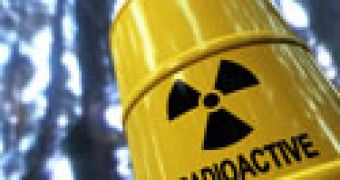Depleted uranium, being twice as dense as lead, is often used by the military to develop armor penetrating weapons. This means that material containing hazardous radioactive uranium-235 could be spread throughout the battlefield into tiny fragments practically impossible to collect. Therefore the area remains partially radioactively contaminated and cannot be entirely used for civilian purposes. A new method developed by a researcher from Scotland promises full depleted uranium decontamination with the help of fungi.
Fungi grow mostly anywhere, although when in the presence of depleted uranium their hyphal filaments cover the whole surface of the material, so that in the end it becomes coated with a yellow mineral known as uranyl phosphate, which stabilizes the uranium. The mineral prevents any biological interaction due to its stable chemistry and it will not dissolve into water, avoiding any radioactive food poisoning threat.
Uranium-235 radioactive poisoning often leads to kidney toxicity, nerve damage and lung cancer. "The fungal-produced minerals are capable of long-term uranium retention, so this may help prevent uptake of uranium by plants, animal and microbes. It might also prevent spent uranium from leaching out from the soil", said University of Dundee lead investigator, Geoffrey Gadd.
"The fungi change its chemistry from being highly chemically unstable and reactive metallic uranium to one of the most chemically stable forms, thus preventing uranium migration through the food chain. You can go to just about any soil, and you'd find fungi that would lock away uranium. You could literally pick them from your own back garden", he said.
The problem is that although the depleted uranium is trapped in a chemically stable form, it still can't be practically collected. The team has yet to find a way to efficiently collect the stabilized fragments. "Our work is only very preliminary", Gadd added. Nonetheless, the solution is viable and will possibly be used in future radioactive decontamination efforts.

 14 DAY TRIAL //
14 DAY TRIAL //